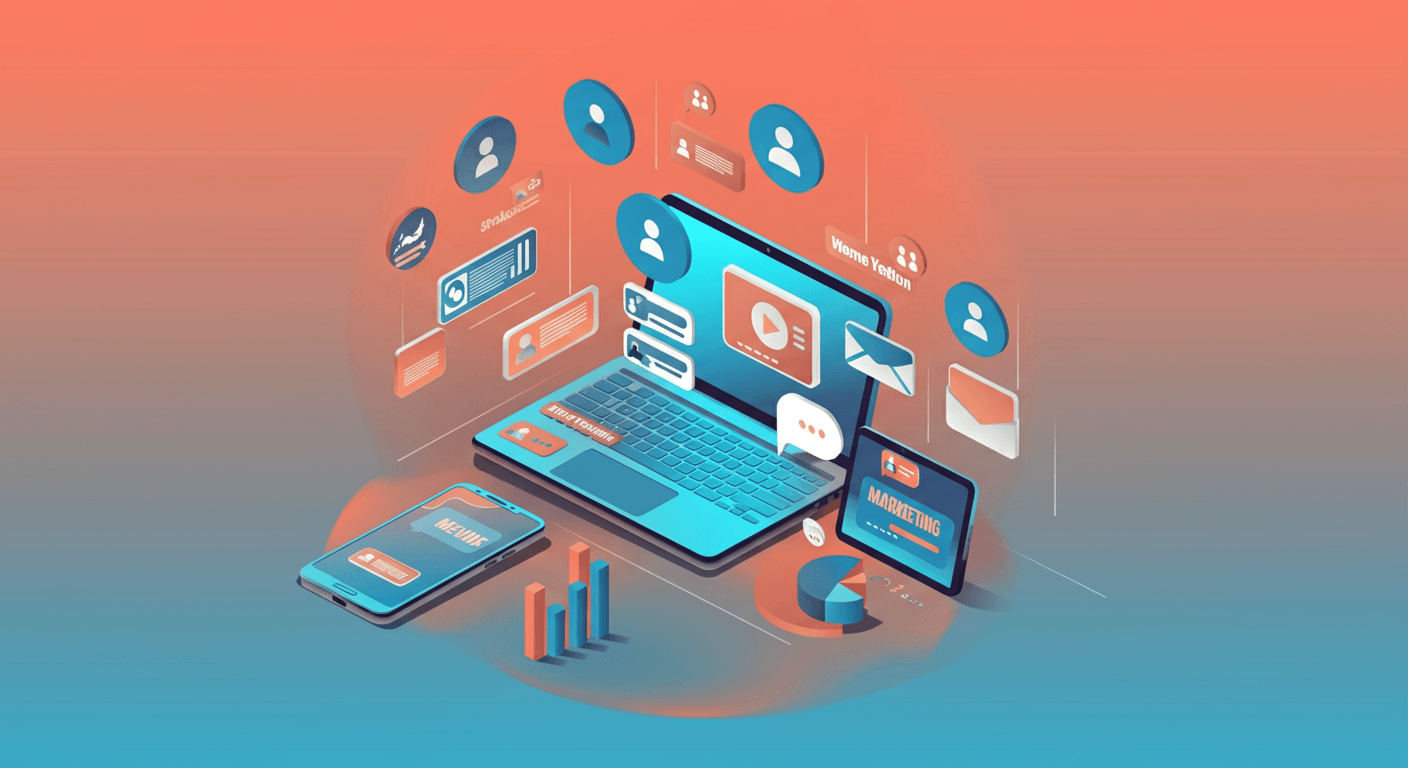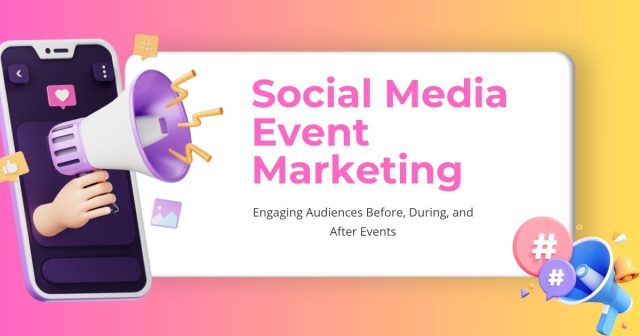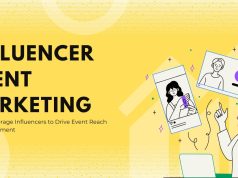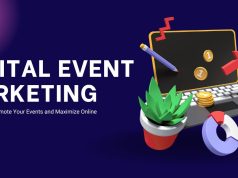Social media has revolutionized how we promote and experience events. From small local meetups to massive conferences, the platforms where your audience spends their time have become essential tools for driving attendance, building buzz, and creating lasting connections.
Whether you’re organizing a corporate conference, product launch, or community gathering, social media event marketing can transform your promotional strategy. The right approach doesn’t just fill seats—it builds anticipation, fosters engagement, and extends your event’s impact far beyond the actual date.
This comprehensive guide will walk you through proven strategies, platform-specific tactics, and actionable tips to make your next event a social media success story.
Why Social Media Event Marketing Works
Traditional event marketing relied heavily on email lists, print advertising, and word-of-mouth promotion. While these methods still have value, social media offers unique advantages that can amplify your reach exponentially.
The visual nature of platforms like Instagram and TikTok allows you to showcase what attendees can expect, creating excitement through behind-the-scenes content, speaker spotlights, and venue previews. Meanwhile, the conversational aspect of Twitter and LinkedIn helps you engage directly with potential attendees, answer questions, and build relationships.
Social media also provides real-time feedback and analytics. You can track engagement rates, monitor sentiment, and adjust your strategy based on what resonates with your audience. This level of insight helps you optimize your approach throughout the entire event lifecycle.

Pre-Event Social Media Strategies
Create a Unified Campaign Identity
Start by developing a consistent visual identity for your event across all social platforms. This includes a distinctive hashtag, branded graphics, color scheme, and messaging framework. Your hashtag should be memorable, unique, and relevant to your event theme.
Design templates for different types of content—speaker announcements, countdown posts, behind-the-scenes updates, and ticket reminders. Consistency in visual presentation helps your audience recognize your event content instantly, even in crowded social feeds.
Build Anticipation with Content Variety
Mix different content types to maintain audience interest throughout your promotional period. Speaker spotlights work particularly well on LinkedIn, where professional audiences appreciate learning about industry experts. Instagram Stories are perfect for quick updates, polls, and interactive content that keeps your event top-of-mind.
Create a content calendar that spaces out your posts strategically. Too much promotional content can overwhelm your audience, while too little might not generate sufficient awareness. Aim for a balance that provides value while building excitement.
Leverage User-Generated Content
Encourage past attendees, speakers, and partners to share their own content about your event. Testimonials, photos from previous years, and anticipation posts from confirmed attendees create authentic social proof that’s more persuasive than branded content alone.
Consider creating a branded frame or filter for profile pictures, allowing supporters to show their excitement while expanding your organic reach. When people see their connections promoting your event, it carries more weight than traditional advertising.
Platform-Specific Event Marketing Tactics

Instagram: Visual Storytelling
Instagram’s visual focus makes it ideal for showcasing the experience your event will provide. Use high-quality images of speakers, venues, food, and networking opportunities. Stories are particularly effective for time-sensitive updates, countdown stickers, and interactive polls about session preferences.
Instagram Reels can showcase quick highlights, speaker introductions, or venue tours. The platform’s algorithm favors video content, potentially expanding your reach to new audiences interested in your event topic.
LinkedIn: Professional Networking
For business events, LinkedIn offers unmatched access to professional audiences. Share detailed posts about industry insights related to your event theme, introduce speakers with their professional backgrounds, and engage in relevant group discussions.
LinkedIn Events feature allows you to create an official event page where people can register interest and share with their networks. This platform is especially valuable for B2B events, conferences, and professional development workshops.
Twitter: Real-Time Engagement
Twitter excels at real-time conversation and trending topics. Use your event hashtag consistently and engage with users who mention your event or related topics. Twitter Lists can help you monitor conversations from speakers, attendees, and industry influencers.
The platform’s fast-paced nature requires more frequent posting compared to other platforms. Share quick updates, retweet relevant content, and respond promptly to questions or comments.
TikTok: Creative Reach
For events targeting younger demographics, TikTok offers creative opportunities to reach new audiences through trending sounds, challenges, and authentic content. Behind-the-scenes preparation, quick speaker introductions, and venue reveals can generate significant engagement.
Consider creating a simple hashtag challenge or encouraging speakers to create their own TikTok content promoting their sessions.
During-Event Social Media Management

Live Content Strategy
Document your event in real-time across multiple platforms. Instagram and Facebook Stories provide perfect formats for quick updates, while Twitter works well for live-tweeting key quotes and insights from sessions.
Assign team members specific responsibilities for social media coverage. Having dedicated photographers, content creators, and community managers ensures consistent posting without overwhelming any single person.
Encourage Attendee Participation
Create opportunities for attendees to share their own content. Photo opportunities with branded backdrops, interactive installations, and networking areas designed for social sharing help amplify your reach organically.
Monitor your event hashtag throughout the day and engage with attendee posts. Liking, commenting, and resharing user-generated content shows appreciation while encouraging others to post their own experiences.
Handle Real-Time Issues
Social media moves quickly, and issues can escalate rapidly during live events. Have a plan for addressing complaints, technical problems, or negative feedback promptly and professionally.
Designate someone to monitor mentions and direct messages throughout the event. Quick, helpful responses to attendee questions about logistics, schedules, or locations demonstrate excellent customer service and prevent small issues from becoming larger problems.
Post-Event Social Media Follow-Up
Extend Event Impact
Your social media event marketing shouldn’t end when the last session concludes. Share highlights, key takeaways, and thank-you messages to maintain momentum and begin building anticipation for future events.
Create recap content that provides value to people who couldn’t attend. This might include quote graphics from keynote speakers, photo galleries, or short video summaries of major sessions.
Analyze and Learn
Review your social media analytics to understand what content performed best, which platforms drove the most engagement, and how your audience responded to different types of posts. This data becomes invaluable for planning your next event’s social media strategy.
Track metrics beyond likes and shares. Look at click-through rates to registration pages, hashtag usage, and sentiment analysis of comments and mentions. These insights help you understand the true impact of your social media efforts.
Build Long-Term Relationships
Use the connections made during your event to build an ongoing community around your brand or cause. Continue engaging with attendees, speakers, and new followers you gained through your event promotion.
Consider creating a dedicated group or community for past attendees, providing ongoing value and making it easier to promote future events to an already-engaged audience.
Measuring Social Media Event Marketing Success
Track both quantitative and qualitative metrics to assess your campaign’s effectiveness. Reach, engagement rates, hashtag performance, and website traffic from social platforms provide measurable data about your campaign’s scope and impact.
Qualitative measures might include sentiment analysis of comments, the quality of user-generated content, and feedback from attendees about how they discovered your event. These insights help you understand not just how many people you reached, but how effectively you communicated your event’s value.
Compare your results to industry benchmarks and your own historical data. Social media event marketing success varies significantly by industry, event size, and target audience, so context matters when evaluating performance.
Ready to Launch Your Next Event Campaign?
Social media event marketing combines strategic planning with creative execution and real-time adaptability. The platforms continue evolving, offering new features and opportunities to connect with your audience in meaningful ways.
Start planning your social media strategy early in your event development process. The most successful campaigns begin building awareness and engagement months before the event date, creating sustained excitement that translates into strong attendance and memorable experiences.
Remember that authenticity resonates more than perfection on social media. Focus on genuinely connecting with your audience, providing real value, and creating experiences worth sharing. Your social media event marketing efforts should feel like natural extensions of the valuable experience you’re creating for attendees.









